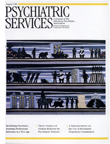Characteristics of state hospital patients arrested for offenses committed during hospitalization
Abstract
OBJECTIVE: The study was a preliminary exploration of the relatively new phenomenon of arresting psychiatric inpatients for offenses committed in the hospital. METHODS: A retrospective record review at two New York state hospitals identified all 73 inpatients arrested over a 30-month period for an offense committed while they were hospitalized. Logistic regression was used to compare arrestees with a control group of 1,438 non-arrested inpatients. RESULTS: The number of arrests at the two hospitals significantly increased over the study period. Seventy-nine percent of arrests resulted from a violent incident. At least 68 percent of arrestees had been arrested previously. Compared with the control group, arrestees were more likely to be young, male, and black and to have a shorter length of stay. Axis I diagnoses did not differentiate arrestees from control patients. Ninety percent of arrestees had a diagnosis of substance use or personality disorder or both. The sample more closely resembled the population of criminal offenders in the community than the psychiatric inpatient population. Prosecution resulted in jail or prison terms for 11 percent of arrestees. CONCLUSIONS: This descriptive preliminary study was limited by its retrospective nature and reliance on records of varying quality. Although the increase in arrests is clear, the cause of the increase and the impact of arrests on arrestees and hospitals remain to be clarified.
Access content
To read the fulltext, please use one of the options below to sign in or purchase access.- Personal login
- Institutional Login
- Sign in via OpenAthens
- Register for access
-
Please login/register if you wish to pair your device and check access availability.
Not a subscriber?
PsychiatryOnline subscription options offer access to the DSM-5 library, books, journals, CME, and patient resources. This all-in-one virtual library provides psychiatrists and mental health professionals with key resources for diagnosis, treatment, research, and professional development.
Need more help? PsychiatryOnline Customer Service may be reached by emailing [email protected] or by calling 800-368-5777 (in the U.S.) or 703-907-7322 (outside the U.S.).



